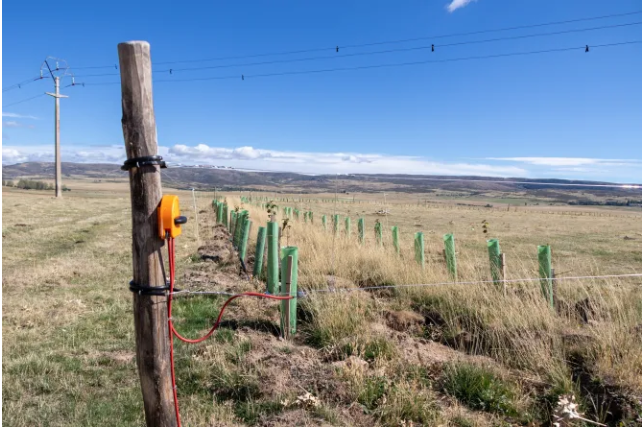Produce in balance with nature with the support of trees and shrubs
Original article from EFE Verde.
Producing in balance with nature is the objective of regenerative farming and agriculture, systems that, in addition to generating food, seek to improve the ecosystem in which they develop, paying special attention to the soil, and that takes into account the planting of trees and shrubs is your great ally.
With the aim of carrying out a quality livestock farm that respects the environment, Carmela Marín, Primary Care doctor; and Ignacio Canales, sculptor, and landscaper have acquired a farm in the Valle de Campo Azálvaro (Segovia), in which they have planted 12,000 trees and shrubs with the support of the European Life Terra project.
Looking for a better diet
"When I became pregnant with our first child, we began to look for foods with greater nutritional value, healthier. It was then that we saw that everything was closely related to the way of producing," Carmela Marín explained to EFE during a visit to the farm.
The way of production not only affects the nutritional value of food but is closely related to the carbon footprint and animal welfare. Just as consumers, since we eat three times a day, "we can directly influence climate change."
"Once you discover that, it is very difficult to look the other way," said Carmela, who in her practice encourages her patients to eat better and not abuse ultra-processed products.
It is a brief message that reaches the population because their Primary Care doctor is telling them about it, a small gesture that makes them look for higher quality products when they go to the supermarket again, he added.
As a result of this concern to improve the family's diet and with everything we learned in that search, "we decided to become farmers and create the product we were looking for," added Ignacio.
His idea, is to produce quality meat for direct sale to a local market and to do it in balance with nature "improving the ecosystem and respecting the habitat of the species that are here, many of them in danger of extinction."
Give food and shelter to animals
To this end, they have created more than 5 kilometers of "living" hedges that, in addition to providing food and shelter for livestock, have been designed to leave large spaces between them so as not to alter the habitat of the steppe birds that nest in the area and of the birds of prey They hunt in the prairies.
"We are in a ZEPA zone, of special protection for birds, and a ZEC zone, of special conservation. Here the little bustard lives, which is a steppe bird, that hunts many raptors that are protected, such as the lesser kestrel or the golden eagle. that is very important to respect large spaces", he underlined.
In order to protect the plantation from the cows, they have chosen to use an electric shepherd, a tool that they will also use to practice "rotational grazing". Cows from a local rancher currently graze on his farm, although his idea is to have his own herd soon.
By moving the cattle from plot to plot, this type of grazing, unlike "continuous", allows the soil to "rest and recover" and prevents the animal from being on its own droppings.
"The uniqueness of our project is to combine the reforestation of native species with livestock to improve the quality of life of the cows, their nutrition, that they have shelter in winter (...) but also the ecosystem in general because a more balanced will help us produce with less intervention and in the long run it will be easier".
Maximize water use and curb wind erosion
The plantation has been carried out by Life Terra, a project co-financed with European funds that aim to plant 500 million trees, one for each inhabitant of the European Union.
In total, they have planted 12,000 trees and shrubs of 14 species throughout the 65 hectares of the farm, thinking of maximizing a resource that will be increasingly scarce, such as water. To do this, they have used the "level curves" of the land, according to the plantation coordinator of Life Terra Núria Borràs.
In the selection of species, their high nutritional level has also prevailed, both for livestock, in order to provide them with food in times when pastures are scarce; as for birds and small invertebrates.
The hedges will also protect the farm from erosion caused by the strong winds that prevail in the area, according to Borràs, who pointed out that they have been distributed to favor the settlement of the soil and that the idea is that this type of plantation can be financed through the voluntary CO2 emissions compensation market.
